One of my favourite features in any landscape photograph is water, particularly water in motion. Waterfalls, rapids, waves and fountains are among the many examples of moving water that I have enjoyed photographing over the years.
Today, I’ve selected some favourites from my recent trip to Utah earlier this month. Not surprisingly, all the pictures feature the Virgin River, the major water course through Zion National Park.
This first picture was extracted (cropped out) from a broader scene, photographed in the Narrows section of the river. It focuses on the foreground, the boulders in the river and the water flow around them. You can see two distinct areas, distinguished by the rate of water flow. In the foreground the flow is less and the water is moving more slowly. No white water here! Further back in the scene is the main channel of the river where the water is moving much more quickly and you can see a more turbulent flow. My camera was mounted on a tripod in the water. I used a wide angle lens, EF17-40mm f/4L USM, operated in full manual mode with the exposure settings: ISO 500, aperture f8 and shutter speed 1/6 second. My main purpose was to get the shutter speed I needed to create the “smoothed” look of the moving water. I also wanted a reasonable depth of field to keep the most important areas of the image in good focus. Due to the subdued light in the canyon, it was necessary to raise the sensor sensitivity to ISO 500 to achieve the desired shutter speed. The one variable I couldn’t control was the flow rates of the stream. You can see the different look to the water in the slow and fast moving areas of the river.
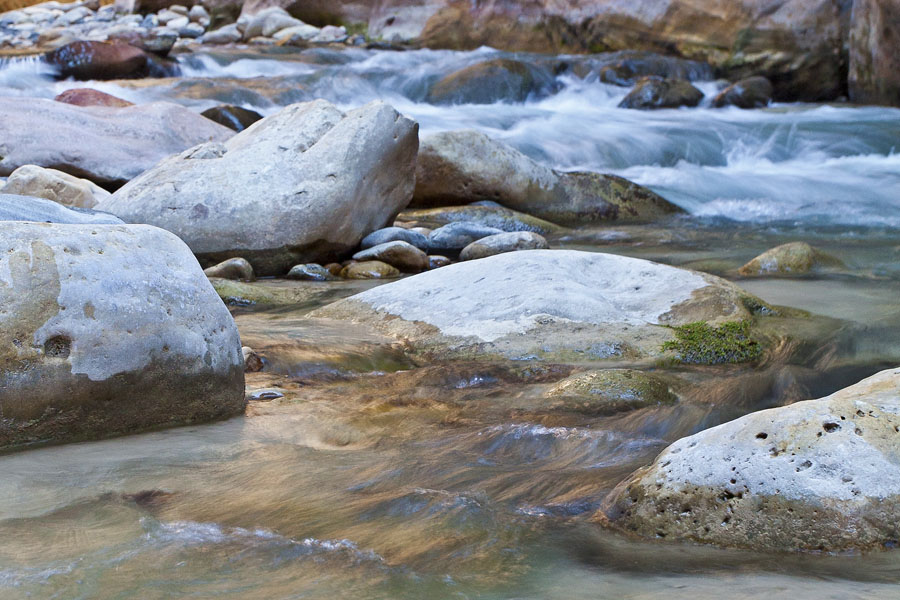
This next picture is similar in nature to the one above. In this case, the rate of water flow across the scene is pretty uniform. The photo was taken in the same way, with similar camera settings: ISO 500, aperture f10 and shutter speed, 4/10 second. The smoothing look is slightly different, attributable to the rate of water flow, a little different in this part of the river. So, to get the look you want you need to experiment with shutter speed to account for variability in the rate of flow. I really like the look I achieved on the far side of the river, the interwoven aqua and white bands.
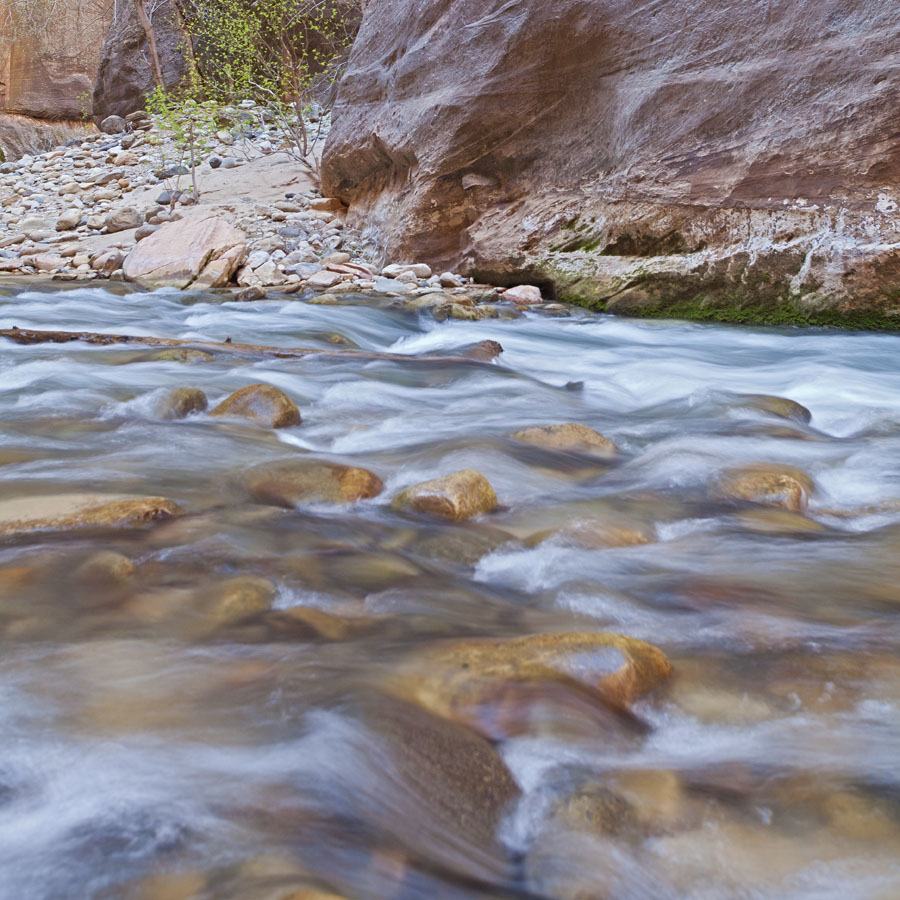
My last example from the Narrows shows the effect of a much longer exposure, 5 seconds. The ISO was set at 50, the aperture at f16 and the camera was operating in the aperture priority mode. In this case, I have ceded control of the shutter speed to the camera with a resultant outcome that looks much different than the two previous pictures. The long exposure has smoothed the water motion to the extreme. The water’s surface has a glassy appearance, almost like ice and the white water has been transformed to flat patches on the water’s surface. Not a good or a bad look, just different.
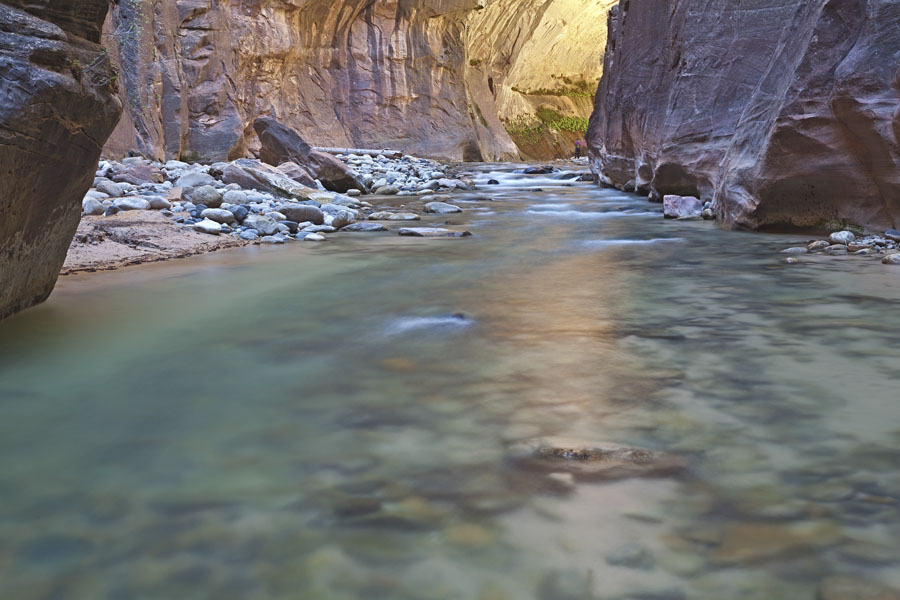
Two final pictures, taken earlier in the day further downstream on the Virgin River. They were taken with different shutter speeds, in the aperture priority node, adjusting the aperture opening and sensor sensitivity to vary the appearance of the water.
The first one has a longer exposure, a more streamed look and I think works better to highlight the warm light on the water’s surface.
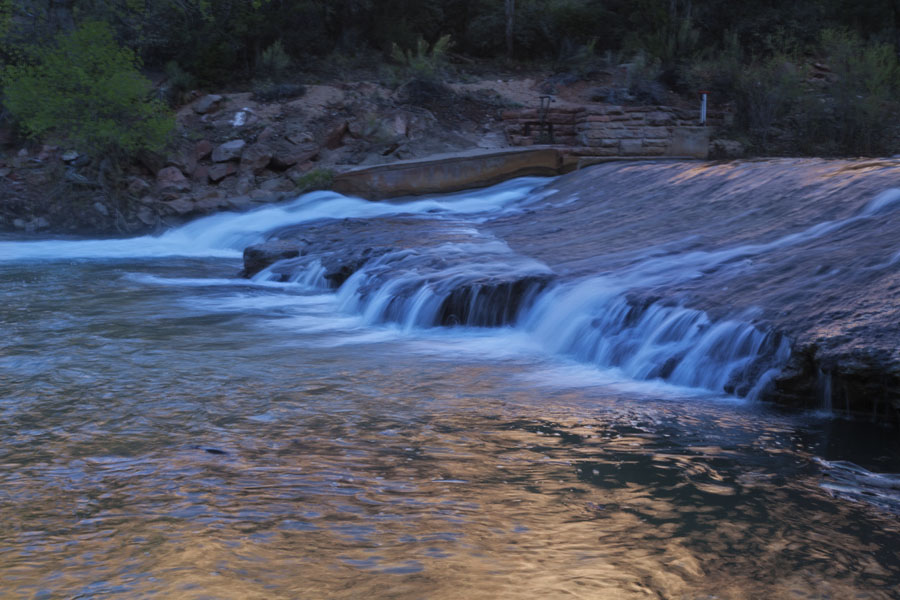
The second has a faster speed and a different appearance. The cascading water is much choppier looking and more like what your eye would actually see. With the very subdued light available early in the morning, it requires a larger aperture and/or higher sensor sensitivity to get it.
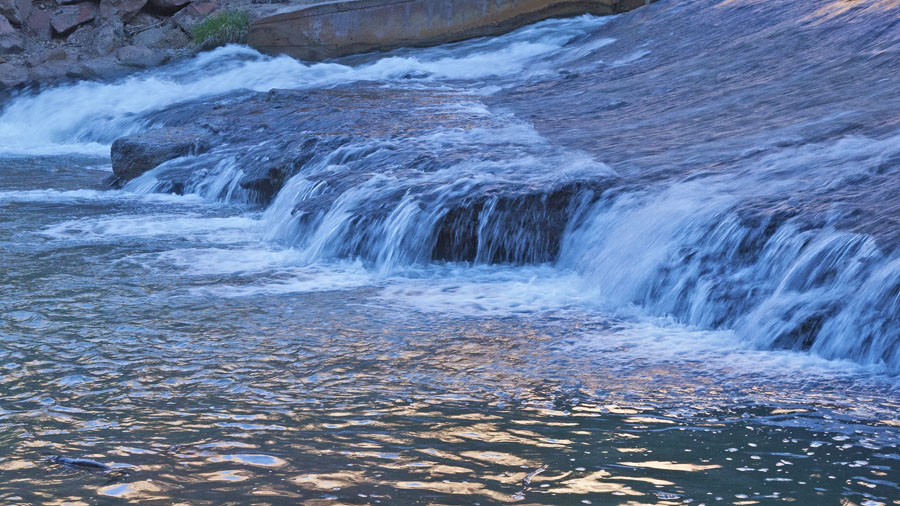
Today’s post shows the variation achievable in pictures of moving water. Perhaps that is why I enjoy it!
